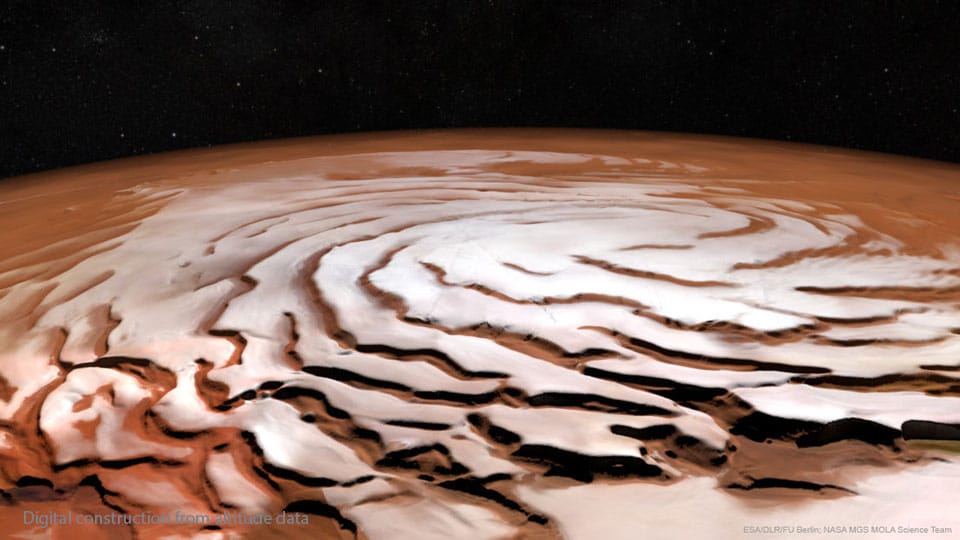The North Pole of Mars is a raised spiral, and each winter a new layer, roughly a meter thick, of carbon dioxide ice gets deposited over it. Strong cold winds rush down from the center of the pole. Mars’s spin creates a Coriolis effect that makes the winds spiral out as they descend. When they cross a depression in the surface, it creates a vortex that erodes the depression deeper. As the depressions deepen and merge, they form the troughs seen here. For more, see this post. (Image credit: ESA/DLR/FU Berlin; NASA MGS MOLA Science Team; via APOD)
Tag: katabatic winds

Martian Polar Troughs
Mars‘s northern pole is capped by a spiral-like pattern of deep troughs that are covered by carbon dioxide ice in winter but visible from orbit in summer. A new study posits that the spiral formed by wind erosion, exposing layer after layer of Martian geology.
The center of Mars’s polar cap is higher in the center than toward the edges, so katabatic winds — cold, dense flows beginning at high elevation — rush down from the pole. But because Mars spins, the Coriolis force causes those winds to flow in an anti-clockwise spiral. As those winds encounter depressions perpendicular to their path, they generate vortices that erode the depression. Eventually, a depression deepens, merges with other depressions, and forms a trough. According to this theory, the clockwise spiral of the troughs is a direct result of the katabatic winds flowing across them. Head over to Bad Astronomy or check out the original paper for more. (Image credit: ESA/DLR/FU Berlin/J. Cowart; research credit: J. Rodriguez et al.; via Bad Astronomy; submitted by Kam-Yung Soh)

